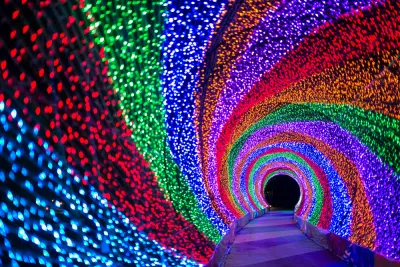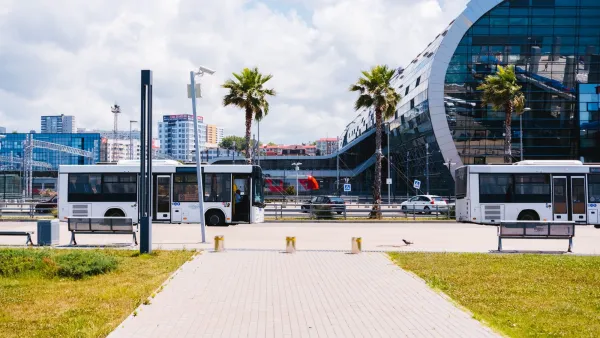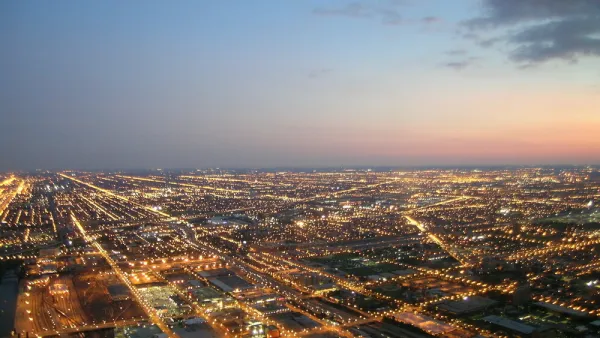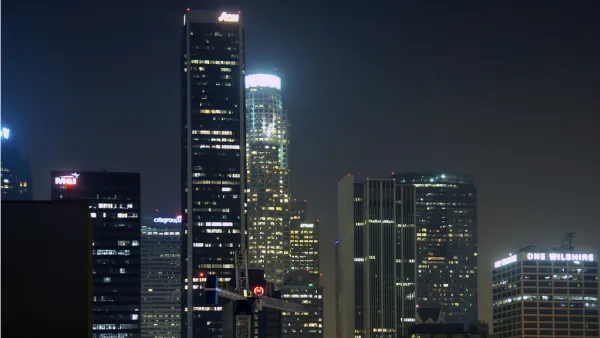A report from the American Medical Association says LED lights are bad for our health, inspiring some cities to re-evaluate the technology.

Cities all over the country are adding LED lights to streets and roadways all over the country, seeking energy efficiency and reduced maintenance requirements. A new report, however, raises alarms about the health impacts of the lights. Michael Ollove reports:
The American Medical Association issued a warning in June that high-intensity LED streetlights — such as those in Seattle, Los Angeles, New York, Houston and elsewhere — emit unseen blue light that can disturb sleep rhythms and possibly increase the risk of serious health conditions, including cancer and cardiovascular disease.
According to Ollove, nearly 13 percent of roadway lighting now use LED lights, with many more plans planning to switch to the technology in the near future, so the AMA's report applies to a huge swath of the country.
And that's not the only concern. "The AMA also cautioned that those light-emitting-diode lights can impair nighttime driving vision," adds Ollove.
The good news is that the AMA does approve of lower-intensity version of the bulbs. New York City, for example, has switched to a lower-intensity version of LED lights in efforts to retrofit its streetlights. Ollove details the efforts of cities like Phoenix and Lake Worth, Florida to find a solution that still installs new lights, but with the AMA's concerns in mind. Other cities have been far more dismissive of the report's findings.
FULL STORY: Some cities are taking another look at LED lighting after AMA warning

National Parks Layoffs Will Cause Communities to Lose Billions
Thousands of essential park workers were laid off this week, just before the busy spring break season.

Retro-silient?: America’s First “Eco-burb,” The Woodlands Turns 50
A master-planned community north of Houston offers lessons on green infrastructure and resilient design, but falls short of its founder’s lofty affordability and walkability goals.

Delivering for America Plan Will Downgrade Mail Service in at Least 49.5 Percent of Zip Codes
Republican and Democrat lawmakers criticize the plan for its disproportionate negative impact on rural communities.

Test News Post 1
This is a summary

Test News Headline 46
Test for the image on the front page.

Balancing Bombs and Butterflies: How the National Guard Protects a Rare Species
The National Guard at Fort Indiantown Gap uses GIS technology and land management strategies to balance military training with conservation efforts, ensuring the survival of the rare eastern regal fritillary butterfly.
Urban Design for Planners 1: Software Tools
This six-course series explores essential urban design concepts using open source software and equips planners with the tools they need to participate fully in the urban design process.
Planning for Universal Design
Learn the tools for implementing Universal Design in planning regulations.
EMC Planning Group, Inc.
Planetizen
Planetizen
Mpact (formerly Rail~Volution)
Great Falls Development Authority, Inc.
HUDs Office of Policy Development and Research
NYU Wagner Graduate School of Public Service





























